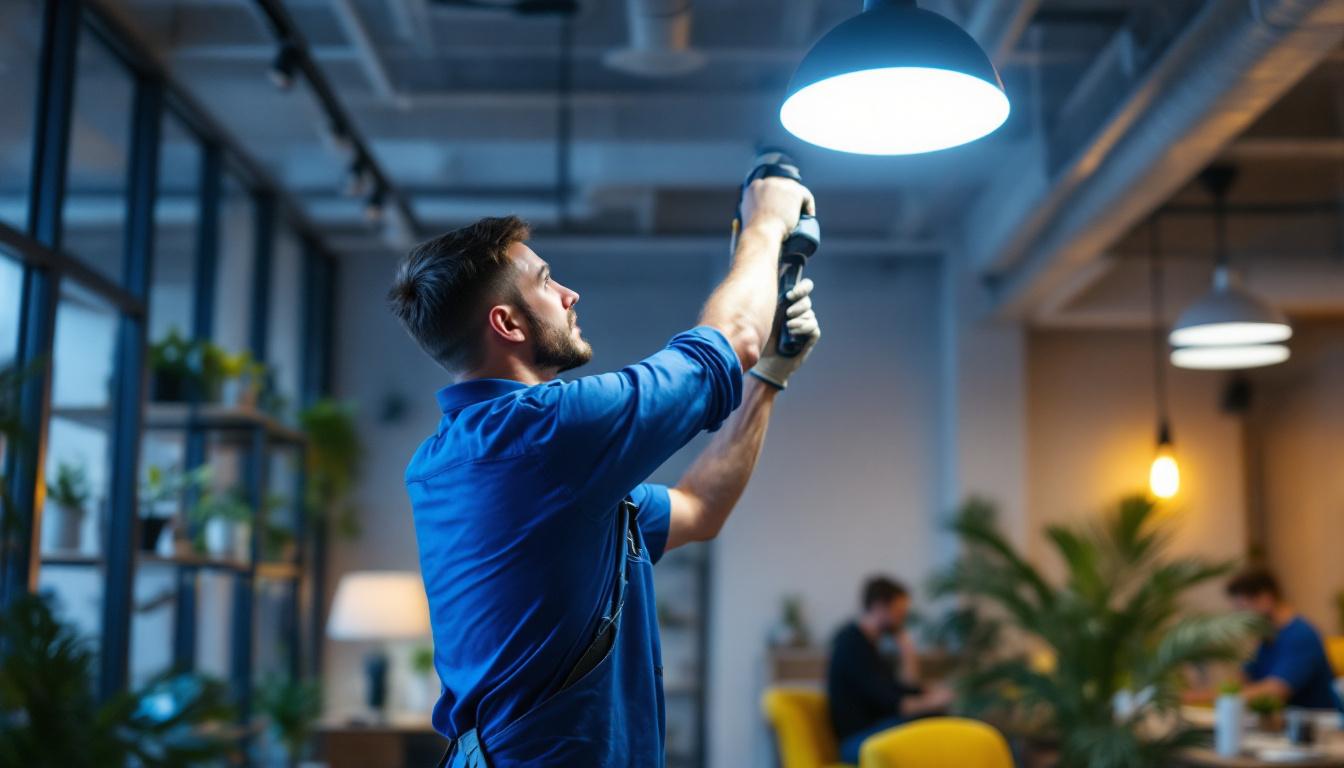
In the world of lighting design, the importance of electrical cable connectors cannot be overstated. These small yet vital components serve as the backbone of any lighting system, ensuring that fixtures operate efficiently and safely. For lighting contractors, understanding the nuances of cable connectors can lead to more innovative designs, improved reliability, and enhanced client satisfaction. This article delves into the various types of electrical cable connectors, their applications, and how they can elevate lighting projects to new heights.
Electrical cable connectors are devices that join two or more electrical circuits together. They facilitate the transmission of electrical power and signals, making them essential for any lighting installation. The choice of connector can impact the performance, safety, and longevity of the lighting system.
There are numerous types of electrical cable connectors available, each designed for specific applications. Some of the most common types include:
Each type of connector has its advantages and disadvantages, and the choice largely depends on the specific requirements of the lighting project. Understanding these options can help contractors make informed decisions that enhance the overall design. For instance, while wire nuts are favored for their simplicity, they may not be suitable for environments where vibration is a concern, as they can loosen over time. On the other hand, terminal blocks offer a more stable connection for systems that require frequent maintenance or reconfiguration.
Electrical cable connectors are utilized in a wide range of lighting applications. From residential to commercial projects, their versatility allows for creative and functional lighting solutions. Here are some common applications:
By selecting the appropriate connectors for each application, lighting contractors can ensure that their designs are both functional and aesthetically pleasing. Moreover, the integration of smart lighting systems has introduced new types of connectors that support data transmission alongside power. These connectors not only allow for energy-efficient lighting solutions but also enable features like remote control and automation, enhancing user experience. As technology advances, the evolution of electrical cable connectors continues to play a crucial role in the development of innovative lighting designs that meet modern demands.
One of the most significant advantages of using high-quality electrical cable connectors is the flexibility they offer in lighting design. With the right connectors, contractors can create a wide range of lighting effects and configurations.
Modular lighting systems have gained popularity in recent years due to their adaptability. These systems often utilize plug-and-play connectors, allowing for easy reconfiguration. This flexibility is particularly beneficial in commercial settings where lighting needs may change frequently.
By incorporating modular systems into their designs, contractors can offer clients the ability to customize their lighting setups without the need for extensive rewiring. This not only saves time but also reduces costs, making it an attractive option for many projects. Furthermore, the ease of installation and maintenance associated with modular systems means that businesses can quickly respond to seasonal changes or special events, ensuring that their lighting remains fresh and relevant throughout the year.
Electrical cable connectors also enable creative lighting solutions that enhance the aesthetic appeal of a space. For instance, using connectors that allow for multiple light fixtures to be linked together can create stunning visual effects. This approach is particularly effective in areas such as galleries, showrooms, and event spaces where lighting plays a crucial role in the overall ambiance.
Moreover, the ability to easily change or upgrade fixtures means that contractors can experiment with different lighting styles and technologies, from LED to smart lighting solutions. This adaptability can set a contractor apart in a competitive market. Additionally, the integration of smart connectors can facilitate the use of remote control systems, allowing users to adjust brightness, color temperature, and even lighting patterns with a simple app. This level of control not only enhances the user experience but also promotes energy efficiency, as users can tailor their lighting to their specific needs at any given moment.
While the design benefits of electrical cable connectors are significant, safety should always be a top priority. Proper installation and selection of connectors are crucial to prevent electrical hazards. Neglecting these aspects can lead to severe consequences, including equipment failure, property damage, or personal injury. Therefore, understanding the intricacies of electrical systems is essential for anyone involved in installation or maintenance.
When selecting connectors, it is essential to consider factors such as voltage rating, current capacity, and environmental conditions. Using connectors that are not rated for the specific application can lead to overheating, short circuits, or even fires. Additionally, the material of the connector plays a critical role; for instance, connectors made from corrosion-resistant materials are preferable in humid or outdoor environments to ensure longevity and performance.
Contractors should always refer to manufacturer specifications and industry standards when choosing connectors for their projects. This diligence not only ensures safety but also contributes to the longevity and reliability of the lighting system. Moreover, staying updated with the latest advancements in connector technology can provide insights into new materials and designs that enhance safety features, such as built-in strain relief or improved insulation properties.
Proper installation techniques are equally important in ensuring the safety and effectiveness of electrical cable connectors. Here are some best practices to follow:
By adhering to these best practices, lighting contractors can enhance the safety and reliability of their installations, ultimately leading to greater client satisfaction. Furthermore, it is advisable to conduct regular inspections and maintenance checks on installed connectors to identify any signs of wear or damage early on. This proactive approach not only mitigates risks but also fosters a culture of safety and responsibility within the electrical contracting community.
Additionally, training and educating all personnel involved in installation about the importance of safety protocols can significantly reduce the likelihood of accidents. Workshops and hands-on training sessions can reinforce the critical nature of proper connector usage and installation techniques, ensuring that everyone understands the potential hazards and how to avoid them. Engaging with industry experts or attending safety seminars can also provide valuable insights into emerging safety practices and technologies, further enhancing the overall safety culture in the field.
The field of electrical cable connectors is continually evolving, with new technologies emerging that promise to improve performance and ease of use. Staying informed about these innovations can provide contractors with a competitive edge.
With the rise of smart lighting solutions, connectors are also becoming more intelligent. Smart connectors can integrate with home automation systems, allowing users to control their lighting through mobile apps or voice commands. This technology not only enhances user experience but also opens up new possibilities for design.
For lighting contractors, incorporating smart connectors into designs can attract tech-savvy clients looking for modern solutions. As smart home technology continues to grow, understanding these connectors will be essential for staying relevant in the industry.
As sustainability becomes a priority in construction and design, eco-friendly connectors are gaining traction. These connectors are made from recyclable materials and designed to minimize waste during installation. By choosing eco-friendly options, contractors can appeal to environmentally conscious clients and contribute to greener building practices.
Furthermore, using energy-efficient lighting systems in conjunction with eco-friendly connectors can significantly reduce a project’s overall carbon footprint, making it a win-win for both contractors and clients.
Electrical cable connectors are indeed the unsung heroes of lighting design. Their role in ensuring safety, flexibility, and innovation cannot be overlooked. For lighting contractors, understanding the various types of connectors and their applications is crucial for delivering high-quality projects that meet client expectations.
By embracing new technologies and adhering to best practices, contractors can enhance their designs while ensuring safety and reliability. As the lighting industry continues to evolve, staying informed about advancements in connector technology will be essential for maintaining a competitive edge.
In summary, the right electrical cable connectors can transform a lighting design from ordinary to extraordinary, paving the way for better functionality, aesthetics, and sustainability. Investing time in understanding these components is an investment in the future of lighting design.
Ready to elevate your lighting designs with the best electrical cable connectors on the market? Look no further than LumenWholesale, where we provide contractors with the highest quality, spec-grade lighting products at unbeatable wholesale prices. Say goodbye to local distributor markups and hello to superior lighting products that meet the highest industry standards. With our hassle-free bulk buying and free shipping, you can ensure your projects shine with reliability and high performance, all while keeping your budget in check. Don’t compromise on quality or value—Wholesale Lighting at the Best Value is just a click away. Experience the LumenWholesale difference today!

Discover how commercial pot lights are revolutionizing the lighting industry, offering contractors innovative solutions for efficiency, design flexibility, and energy savings.

Explore the pivotal role of light scales in the success of lighting contractors.

Unlock the secrets of RGB LED lighting with this comprehensive guide tailored for lighting contractors.

Discover why outdoor LED lights are revolutionizing residential lighting projects.